Everything You Need to Know About Charging an Electric Vehicle
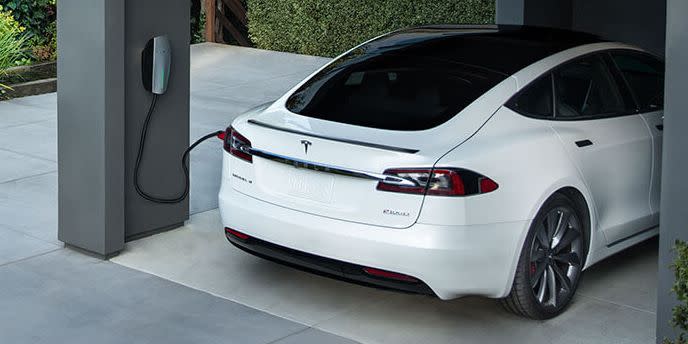
So, you’re considering making the leap to an electric car. Unlike purchasing a vehicle with an internal combustion engine, buying an EV involves some forethought and planning. Particularly when it comes to keeping it running. Whereas gas stations are a dime-a-dozen, the infrastructure for electric chargers is still a bit shaky. Don't let this scare you, though, as there are a lot of different options available to ensure you're easily able to charge your electric car.
One of the best decisions you can make before purchasing an EV is to have a charger installed where you live. That’s certainly easier if you own your home, but there are plenty of hoops to jump through to make it happen (permits, contractors, fees). To simplify the process, some automakers incentivize this process, as do a number of state and local governments. If you happen to rent the place you call home, then it never hurts to ask your landlord about the possibility of installing an electric car charger.
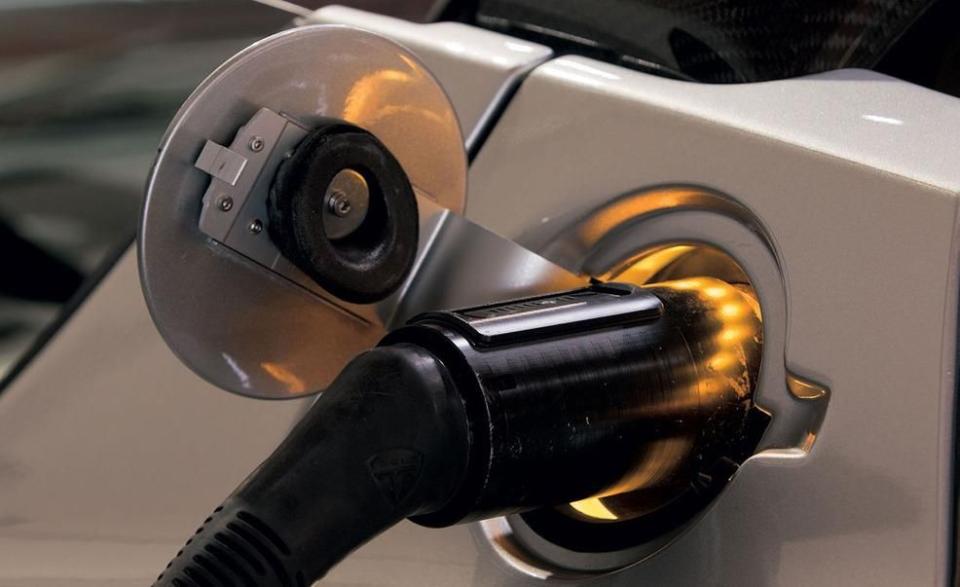
EV Charging Levels and Charging at Home
There are three main classifications of EV charging, and the one you’ll want to use depends on how far you’re going and how much time you have. It’s also important to remember charging an EV is unlike refueling a gasoline-powered car, in that you’ll almost never wait until the battery approaches empty before you plug in. If you charge at home, it’s easy to plug in at the end of each day and recharge overnight. The same is largely true during the day if you’re able to charge at work. Longer road trips require a different approach because you have less time to work with.
Level 1 charge equipment is typically provided with all new EVs. This type plugs into an ordinary 120V household outlet, making this the most convenient but also the slowest way to charge an electric car. Level 1 chargers add roughly two to four miles of range per hour, with the lower end of that range corresponding to larger, less efficient EVs. This means Level 1 charging can take days, not hours, to fully replenish a depleted battery pack. But charging from empty is far from the norm, so Level 1 can work out just fine if you drive no more than 20 miles or so per day and can plug in every night.
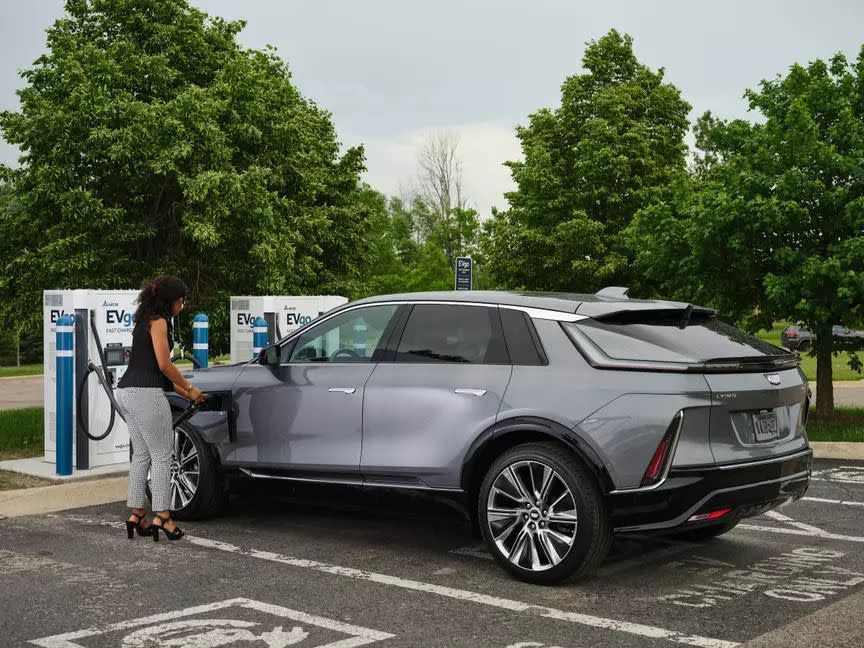
You do need to consider a couple of points. First, you should consult an electrician to see if the socket you plan to use is up to it, especially if your home isn’t relatively new. Also, you should never plug your car’s Level 1 charge cord in via an extension cord, because the extra wire length adds resistance that can overheat your home wiring. Also, if you’re unable to plug in regularly, or want to be able to add spontaneous side trips during the day or on weekends, you may find that this setup charges at a rate that's too slow for your liking.
To satiate your need for charging speed, you're going to want to look into stepping up to Level 2 home charging, which can support up to 240 volts at triple (and in some cases quadruple) the amperage of Level 1. That makes most Level 2 setups six to eight times faster than Level 1, which equates to between 12 and 32 miles of range added per hour of charging, with the more efficient EVs toward the higher end of that range. With Level 2, you can add a significant amount of range to most EVs in a couple of hours, and it makes full overnight top-ups a breeze even if you happened to drive more miles than usual, skipped charging for a couple of days, or programmed your car to delay charging until the wee hours when electricity rates can plummet.
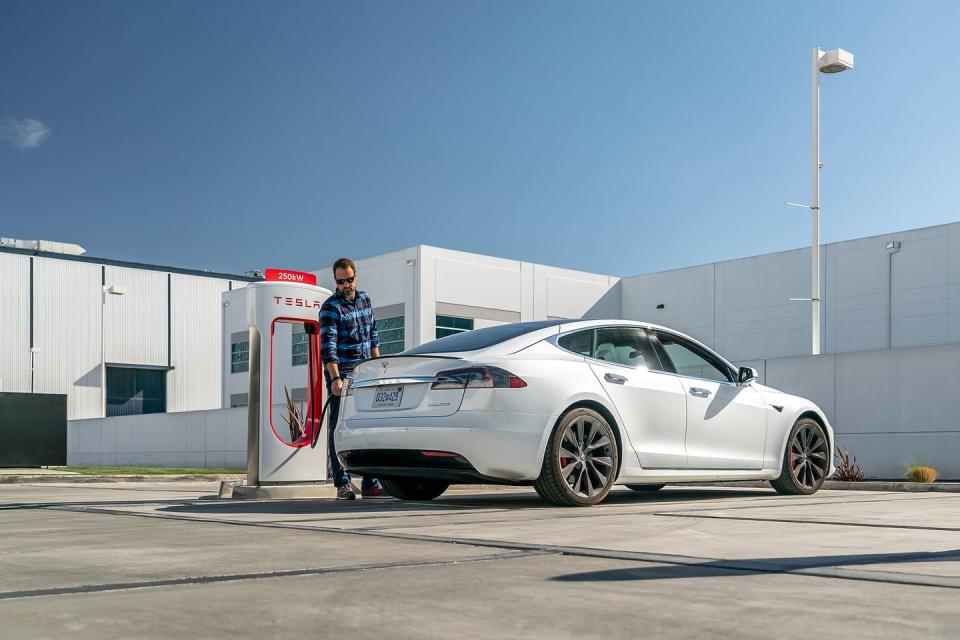
Level 2 is fairly attainable, especially if you are a homeowner. Some of the supplied cords that come with EVs have swappable ends that feature 240V plugs, but if the cord that comes with the EV you’re considering doesn’t have such a feature, you can purchase standalone Level 2 home charge equipment. Either way, you’ll need a 220–240V outlet that’s connected to a dedicated circuit breaker. A consultation with an electrician is necessary to add such a circuit and make sure your panel is up to it. There are a few notable plug options, but the best and most common is called a NEMA 14-50. This is the same outlet RV parks provide for Class A motorhomes, so you might be in a plug-and-play situation if you’ve already had your garage wired up to support such an RV.
But Level 2 isn’t just found at home. It’s the predominant type found in public spaces, workplaces, and certain shopping malls. Also, the cord-end that you plug into the car looks the same as home Level 1 and Level 2 equipment. You can add a significant chunk of range if you plug in while you’re having dinner-and-a-movie with a friend or significant other, but they are not intended for a full fill from near-empty, mainly because they’re generally not located where people spend many hours in one place.
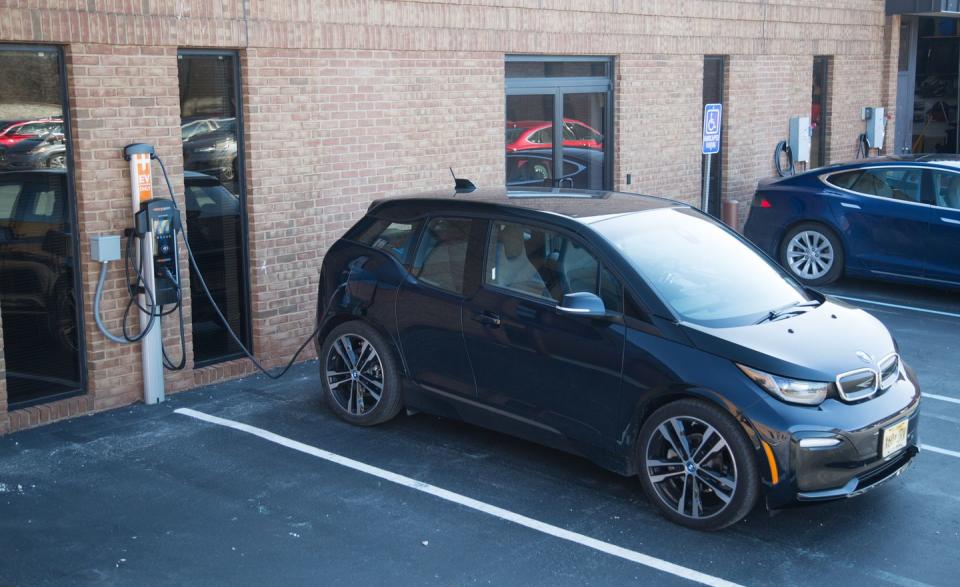
Fast-Charging
Level 3 chargers are also known as DC fast chargers, and as the name suggests, this equipment can much more rapidly charge your electric car's battery. Fast charging is particularly helpful on long trips that require intermediate charges to reach a destination because most compatible EVs can take on 100–250 miles or more of range in significantly less than an hour. Level 3 chargers differ from Level 2 charge equipment in that they utilize a different socket on the vehicle side, with extra pins intended to handle additional higher voltage.
There are three types. Tesla Superchargers utilize their own proprietary socket that other cars are—as yet—unable to use here in North America. SAE Combo (also known as CCS or simply Combo) chargers are based on the same socket used by the Level 2 plug, but with an extra pair of large pins grafted on below. CCS-enabled cars typically have a secondary flap the user folds down to expose the socket for these extra pins. Finally, there’s CHAdeMO, the BetaMax of the trio. This socket is mainly found on a few Mitsubishis and the Nissan Leaf, though Nissan's future products will use the CCS interface going forward.
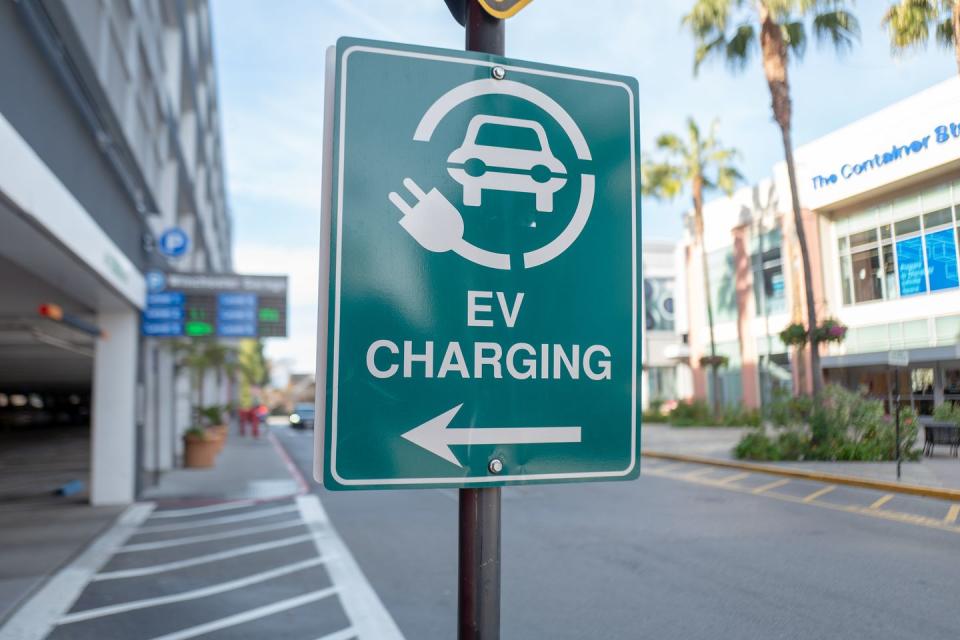
The rate of charge is measured in kilowatts (kW), which currently range from a low of 50 kW to a high of 350 kW depending on the specific charger. The fast-charge capability of the car itself matters, too. A car that has a maximum DC Fast charge rate of 50 kW will gain nothing by plugging into a 350 kW station, and will instead take up a spot that a car with faster-charging capability could use.
EV owners will see a noticeable dip in the charge rate once their car's battery reaches approximately 80 percent capacity. In practical terms, an 80 or 90 percent charge is more than enough to get you down the road to the next stop. But this is also done to prevent damaging the battery pack by way of overcharging or overheating it. Think of it like pouring water into a glass. You can dump in a lot at first, but you generally slow the flow as the glass approaches full and dribble it in near the end, otherwise, you run the risk the water may overflow.

 Yahoo Autos
Yahoo Autos 